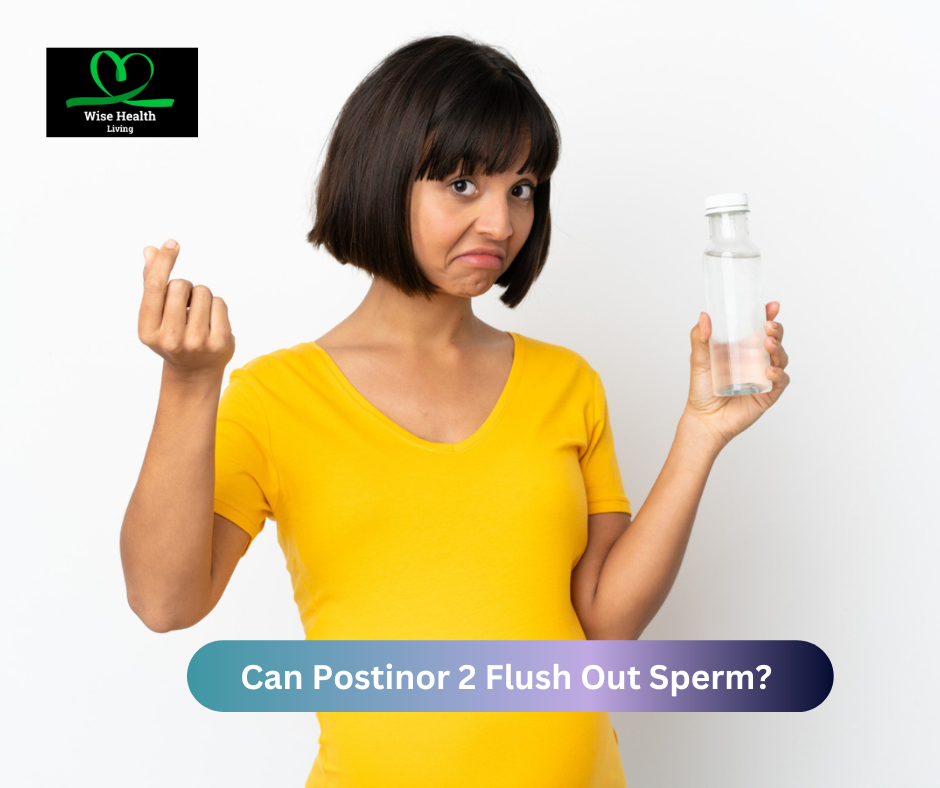Women and their partners at a point in time asked themselves this question: “can postinor 2 flush out sperm”. Essentially, this question is hinged on one thing, sex and pregnancy.
Many people get to enjoy sex, but coming along with the enjoyment is their greatest fear-an unwanted or unplanned pregnancy.
Some of these unwanted pregnancies have been a result of rape, unprotected sex or irresponsible behaviour on the part of some and these unwanted pregnancies have been the end to many dreams and plans by many people.
Educational endeavours have been put on hold, careers have had to suffer. And many people have not had a chance to recover their former positions because they have had one unwanted pregnancy or the other.
Many people have also had to go through a lot because of them getting an unwanted pregnancies. Couples have been split, society has stigmatised many others due to the age at which they got pregnant or the circumstances leading to the pregnancy. Some have had to forcefully take up responsibilities that could have been avoided, putting more pressure on an already load-laden donkey.
In order to end this scourge, scientists and medical experts have, over the centuries, perfected the art of contraceptive use let us take a look at this before we examine the question: “can Postinor 2 flush out sperm?”
What are contraceptives?
The use of techniques or equipment to avoid unintended pregnancy is known as contraceptives, also known by the names contraception, anti-conception, and fertility control.
Although birth control has been used since antiquity, modern times saw the development of reliable birth control technologies. Family planning includes preparing for and employing human birth control.
Birth control availability may be restricted or discouraged in some cultures because they view it as immoral, unreligious, or politically unwise.
Methods of contraceptives
There are various methods of contraceptives available to people. And the method of contraceptive use is based on the time of use. There are two main branches of the methods of contraceptives. The first branch is the methods of contraceptives used before sex and the other is those methods used after sex.
1. Contraceptive methods based on their use before sex
The following contraceptive methods are used before one has sex: barrier methods, hormonal birth control, intrauterine devices (IUDs), sterilisation, and behavioural methods.
i. Barrier methods of contraceptives
This method includes condoms, the diaphragm, the cervical cap, the contraceptive sponge, and spermicides. They physically obstruct or somehow stop sperm from going into the uterus and fertilising the egg. Spermicide, a drug that kills sperm, is used with the diaphragm, cervical cap, and sponge to prevent conception.
They are a wonderful option because they don’t have any adverse hormonal effects (since they do not contain hormones).
Protect against some sexually transmitted illnesses using internal and exterior condoms. Also, they are accessible without a prescription (in the case of condoms, contraceptive sponges, and spermicides).
Depending on the birth control technique you use, barrier methods may or may not be effective. If you use your birth control exactly, that is, every time you have sex and strictly adhere to all directions, the chance of pregnancy may be modestly reduced.
ii. Hormonal Birth control
Using birth control treatments that affect the endocrine system is known as hormonal contraception. Steroid hormones are used in almost all techniques.
For the majority of people, hormonal contraception is a safe and effective technique to prevent pregnancy since they either include progestin solely or oestrogen plus progestin.
There are currently only female-specific treatments available, while research is ongoing to create male hormonal contraceptives.
The use of an implant, an intrauterine device (IUD), shots, tablets, vaginal rings, and skin patches are examples of hormonal approaches.
There are two basic categories of hormonal contraceptive formulations: progesterone-only techniques, which include just progesterone or one of its synthetic counterparts, and mixed methods, which contain both an oestrogen and a progestin (progestin).
In contrast to progesterone-alone techniques, which merely lower the frequency of ovulation, combined approaches function by suppressing ovulation and thickening cervical mucus.
iii. Intrauterine Device (IUD) Birth Control Methods
A tiny, frequently T-shaped birth control device called an intrauterine device (IUD), sometimes known as an intrauterine contraceptive device (IUD or ICD), or coil, is put into the uterus to prevent pregnancy. IUDs are one type of reversible long-acting birth control (LARC).
IUDs and other contraceptive implants are the birth control devices that provide users with the most satisfaction.
Both teenagers and individuals who have never had children can safely and effectively use IUDs. Even after prolonged usage, fertility quickly returns to normal when an IUD is removed.
iv. Sterilisation method
Any of a variety of medical birth control procedures known as sterilisation renders a person infertile on purpose. Both males and females can be sterilised using surgical and non-surgical procedures. Procedures for sterilisation are meant to be permanent; normally, it is difficult or impossible to reverse them.
There are other methods for sterilisation, but the two that are most usually performed are vasectomy for males and tubal ligation for women. Tubal sterilisation may be carried out in a variety of methods. It works really well and frequently requires surgery. Sterilisation can be undone in some circumstances, but not all.
v. Behavioural methods of birth control
Instead of using drugs, herbs, gadgets, or obstacles to prevent conception, these techniques rely on an understanding of the menstrual cycle, male and female reproductive physiology, and other related topics.
The two types of behavioural interventions are those that do not depend on the menstrual cycle (such as abstinence or coitus interruptus) and those that depend on the period.
The two categories of methods that depend on the menstrual cycle are Fertility Awareness Methods (FAM) and “Natural” Family Planning (NFP). Although NFP uses the menstrual calendar to identify days that are likely to be fertile and days that are not, FAM includes approaches that rely on women to observe physiological changes during their menstrual cycle.
Recommended – How To Get Sperm Out Of Your Body Fast
2. Contraceptive methods based on their use after sex
This method is also called an emergency contraceptive. This method of birth control is used to prevent pregnancy after sexual activity or when other conventional methods have not been effective or have not been utilised effectively. Women who don’t want to get pregnant but have engaged in unprotected intercourse on any day of the menstrual cycle, on day 21 after giving birth, or on day 5 following an abortion or miscarriage are administered emergency contraception. Oral contraceptive pills or the placement of a copper intrauterine device are both acceptable forms of emergency contraception.
Emergency contraceptives come in several configurations including Intrauterine devices (IUDs) and Emergency contraceptive pills (ECPs).
i. Intrauterine devices (IUDs)
The most efficient way of emergency contraception is occasionally used with intrauterine devices (IUDs), which are often used as a primary contraceptive method. IUDs are very infrequently used for emergency contraception, nevertheless.
ii. Emergency contraceptive pills (ECPs)
Often known as the morning-after pill or emergency contraceptives (ECs), these are drugs used to prevent or postpone ovulation or fertilisation, two processes essential for pregnancy.
It is not the same as a medical abortion, which entails the use of a chemical regimen delivered to end pregnancies throughout the second and even third trimester.
One of the emergency contraceptive pills that is common to us is Postinor 2
What is Postinor 2?
The morning-after pill, also known as postinor-2, is exclusively used as an emergency contraceptive. When taken within 72 hours (3 days) after unprotected sexual contact, it is intended to prevent pregnancy. It is not employed as a regular, ongoing form of birth control.
Can Postinor 2 Flush Out Sperm?
Postinor does not exactly flush out sperm. What Postinor does is that it alters the likelihood of conception in a variety of ways. The release of the egg may be delayed if taken before ovulation. Taken after ovulation, it could obstruct the movement of sperm and eggs. Moreover, Postinor changes the uterine lining, making it impossible for the fertilised egg to successfully implant there.
When is it advisable to take Postinor 2?
Medical experts advise that Postinor 2 should be taken no later than three days after engaging in unprotected intercourse. Yet, it works better in situations when therapy begins sooner after the sexual experience.
Important points to note about Postinor 2 use
- It is crucial to remember that Postinor 2 should be taken twice, separated by a 12-hour gap between each dosage.
- It’s crucial to remember that you must take the next dosage in the series and call your doctor for a replacement if regurgitation (vomiting) happens within two hours of taking the first dose.
- If the second dosage is not given on schedule, speak with a doctor to determine whether another round of therapy is necessary.
- Postinor-2 should only be used up to three times a year, every four months.
What are the side effects of taking Postinor 2?
People who use Postinor 2 may experience the following side effects:
- Fatigue
- Dizziness
- Diarrhoea
- Heavy Vaginal bleeding
- Nausea and vomiting
- Cramps
- Tenderness on breasts
- Headaches and more
It is imperative to note that these symptoms are mild and should be able to pass within a few days. If symptoms persist or become serious, ensure you see the doctor immediately.
Exciting Read – Top 6 Foods That Make You Taste Sweeter
When should Postinor 2 not be taken?
1. The person has hypersensitivity or allergic reactions to any of its components.
2. The person has breast cancer.
3. The person is currently pregnant.
4. The person suspects that she is already pregnant.
5. The person has had intercourse more than 72 hours prior.
6. The person has liver problems.
7. The person has some serious, unexplained bleeding from her vagina.
Postinor 2 should be taken with the doctor being aware first if one…
1. Is diabetic
2. Has a heart disease
3. Has retinopathy or neuropathy
4. Has high blood pressure
5. Has had a history of breast cancer.
6. Finds it difficult to absorb things into her body
7. Has had a stroke
8. Has an Ischaemic heart disease
How effective is Postinor 2?
Pregnancy can be avoided in 85% of cases using postinor-2. It has a 95% likelihood of preventing pregnancy if taken within 24 hours. Taking it after 48 to 72 hours increases the likelihood by 58%. If taken more than 72 hours after unprotected intercourse, its effectiveness is unknown.
Unless the menstruation is late, Postinor-2 may be taken at any point during the menstrual cycle.
In conclusion
We can understand the question: “can Postinor 2 flush out sperm?” is properly answered in this discourse and we know that the sperm does not just get flushed out It could be taken out as waste when they die.
The male sperm does not stay forever in the cervix. It can last up to five days and after that, die and get tagged as waste. Make sure that you use any of the contraceptive methods mentioned above with advice from your doctor in order to avoid unwanted pregnancies.



